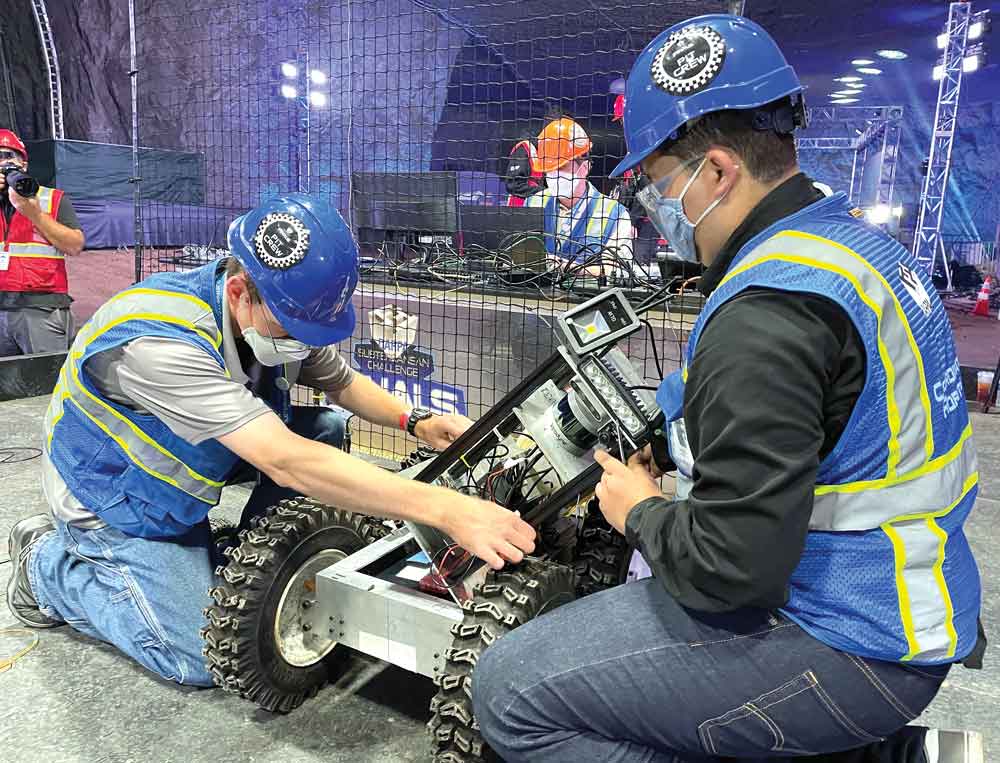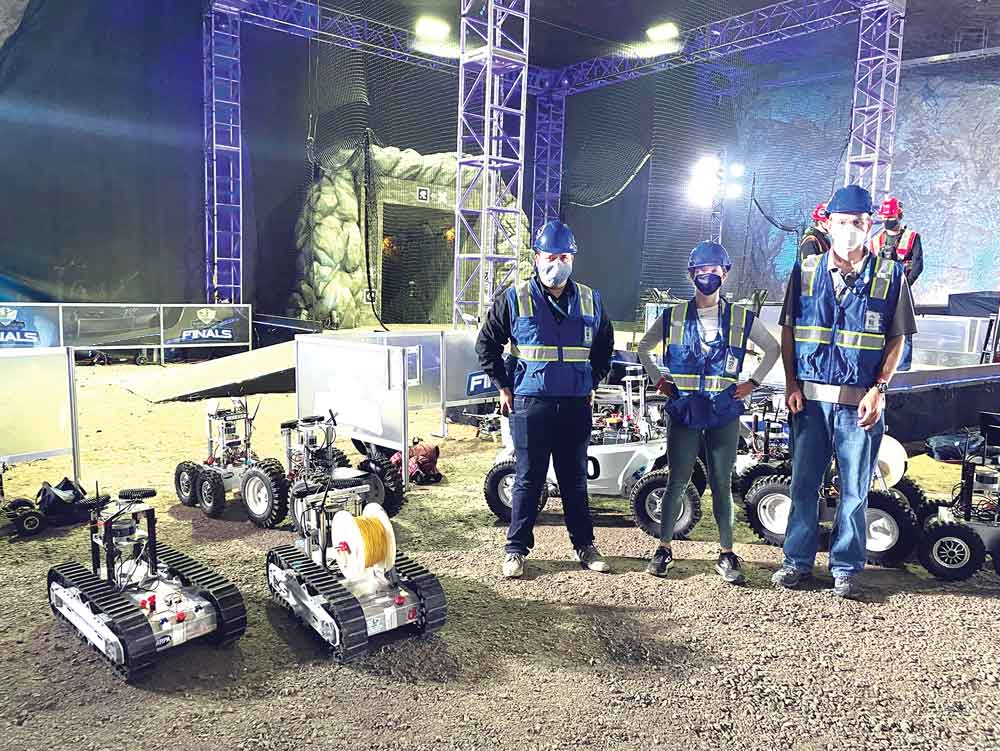
Andrew Herdering and Hugo Quintero (photo courtesy of Jason Isaacs)
Robots built by Mechatronics students advance to the finals of an international competition
By Kim Lamb GregoryWith a headlamp lighting its way, a robot hardly bigger than a child’s wagon rolled through the dark over rocks, through mud and up uneven slopes in search of a helmet, a cell phone or a mannequin lying on its side.
The robot was one of several built by CSUCI Mechatronics Engineering seniors Sara Centeno, Andrew Herdering and Hugo Quintero for the finals of the Defense Advanced Research Projects Agency (DARPA) Subterranean (SubT) challenge, which was held Sept. 21 through 24 at the Louisville Mega Cavern in Louisville, Kentucky.
DARPA Tactical Technology Office of Public Affairs spokesman Randy Atkins explained that DARPA organizes this competition each year in a quest for cutting edge technology that can be used in subterranean rescues and other situations requiring unmanned remote-controlled vehicles in underground situations.
“DARPA is trying to push the boundaries of what’s possible when there is a need to go into underground environments and explore,” Atkins said. “Most of our technology is for the military, but there are other times we need to go into underground environments and help the first responders, such as the soccer team in Thailand that got stuck in the cave.”
The CSUCI team, called “Coordinated Robotics,” was one of eight robotics teams from around the world who made the finals of the competition.
“The objective of the competition was to send the robots into dark underground areas with lights, cameras and underground sensors in order to make a map of this underground area,” explained Associate Professor of Computer Science Jason Isaacs, Ph.D., the team’s faculty mentor.

Hugo Quintero, Sara Centeno, and Andrew Herdering (photo courtesy of Jason Isaacs)
Coordinated Robotics won a spot at the finals by competing in an “urban circuit” in January of 2020 — a competition in an urban setting — and submitting qualifying videos of their robots at work.
Newbury Park robotics enthusiast Kevin Knoedler was competing for the $2 million first prize and asked Isaacs and Mechatronics students to be part of the team. Mechatronics Engineering seniors Mishell Beylik and Mariah Stewart along with several first-year Mechatronics students also helped build the robots.
Centeno, Herdering and Quintero admit they were a little intimidated at the other teams who showed up from as far away as Spain, the Czech Republic, Canada, Germany and across the U.S. to compete.
“It’s exciting but also a little nerve-wracking,” Centeno said, before the first circuit began. “We will be running about five or six robots, and within 30 minutes, our robots have to correctly identify as many artifacts as possible that represent signs of life in a rescue operation.”
The team worked hard, calibrating robots that hit glitches, strategizing after each circuit, and making each run better. In the end, the team didn’t take home the prize, but earned something they’ll benefit from throughout their careers: experience.
“It was an amazing experience,” Quintero said. “We got to see a lot of incredible solutions to the same problem of underground search and rescue.”
Isaacs said he could not be prouder of the team, and all of the students who helped build the robots.
Return to the Table of Contents
© Fall 2021 / Volume 26 / Number 2 / Biannual
